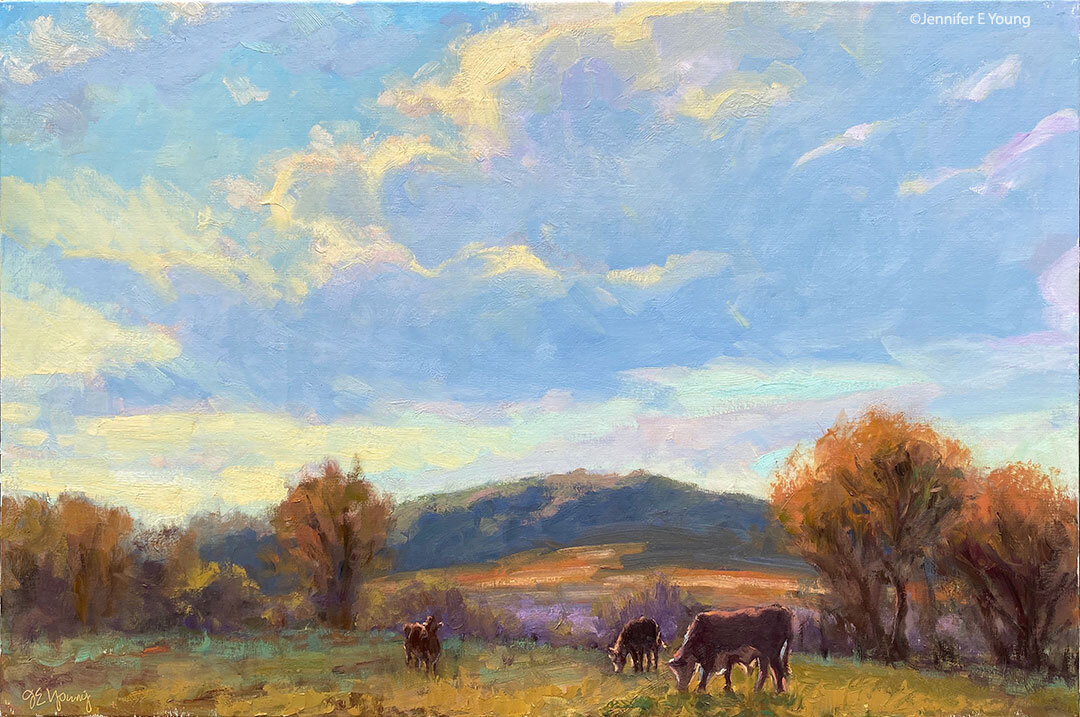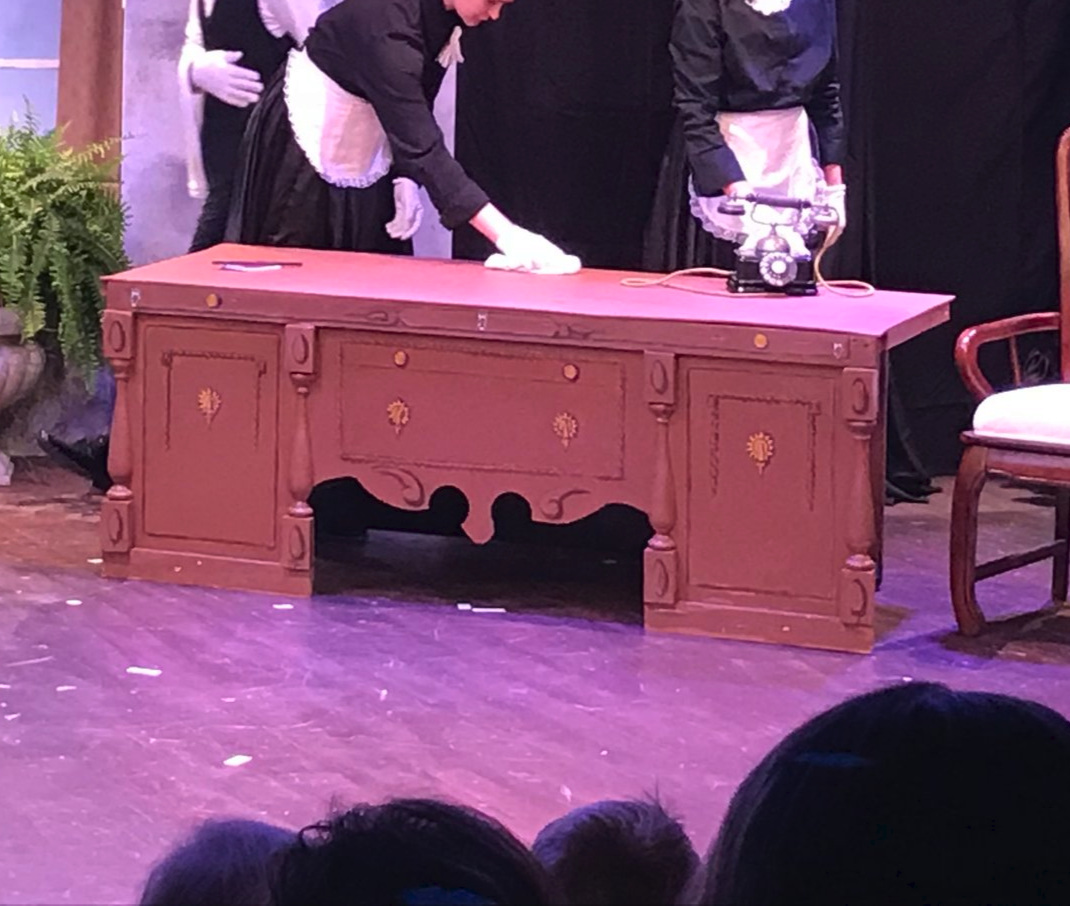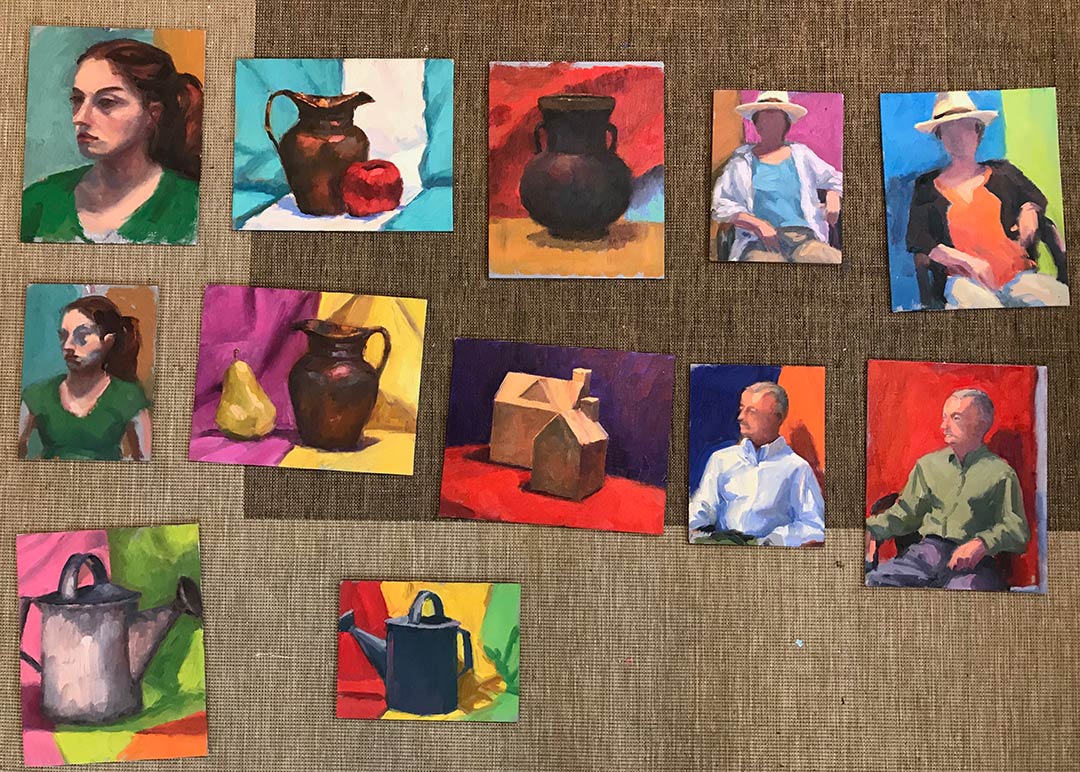After a couple of wipers, I finally have at least a work-in-progress to post. I've continued with the Bellagio theme, this time with an ariel view. I guess I'd call this a color block-in:

Why the wipers? Well, I've been oil painting without solvents, and it's taking some practice to get the hang of things. Now as a fairly long-time an oil painter, I'm quite used to being around solvents. I do try to be conscientious of the risks and precautions, so I minimize odor (through ventilation and the use of a high quality OMS) and contact (wearing nitrile gloves) when handling my paints. But otherwise I admit I haven't thought too much about what potential hazards might be involved.
I guess I've been fortunate, in that I haven't experienced some of the allergies that other artists have suffered. But allergies or not, now that I am in the midst of pregnancy, taking the utmost care in the studio has taken on a new significance. So I decided to do a little investigating....
* Warning, this post is rather long...it's the first in a series of postings about what I've learned on alternatives to my usual oil painting method, presented in my usual rather rambling way. It's certainly not the definitive source on the topic, but may hopefully provide some insight or a jumping off point for other painters who may be wondering about some of this stuff.
Pigments
When considering alternatives to my usual method of painting, I first took a look at the pigments I was using, simply because they are essentially the same substance found in oils, watercolors, acrylics, casein, etc. Pigments are the ground powder, either natural or synthetic, that comprises the "colored part" of the paint.
From what I can gather, due to the risk of inhalation, pigments seem to be most hazardous when in their ground, dry form. Some folks using manufactured paints from the tube are rather indifferent in their attitude about pigments in paints, saying, "Well, as long as you don't snort or eat your paints you'll be fine." Nevertheless, some pigments do contain toxins and heavy metals, which could potentially be ingested or absorbed through the skin on surface contact. So for this reason it's always a good idea to wear gloves when handling them, and avoid eating, smoking, etc., around them, at least not without thoroughly scrubbing with soap before hand.
I put the question of hazards in manufactured artist oils to the maker of the oil paints I use most frequently- Winsor Newton. The technician, Amy Faris, was extremely helpful and very quickly responsive to my queries. Here's an excerpt of some of what she wrote about pigments:
"Depending on the color, our oil paints contain either linseed oil or safflower oil, with the possible addition of a drier, again depending on the color. Other than than, I am unable to give you any specific recipes regarding the oils, because that information falls under the category of proprietary, and they won't even share it with me." (*Jen's note: this last sentence is one I heard over and over from the manufacturers of artist's materials that I queried directly.)"
"What I can tell you is that all of our products are tested and labeled for health and safety by an independent toxicologist at the Art and Creative Materials Institute (ACMI). An AP label - or a non-toxic label signifies that the toxicologist has not found anything in the product that can cause you harm, as long as you are using the product in the manner for which it was created - in other words, you are not eating it, applying it to your friend's body, etc. A CL warning label signifies that the toxicologist has found something in the product that can potentially cause harm. This CL label is usually followed by a statement on how to use the product safely."
"All health labeling can be found right on the back of every tube of paint we manufacture and on every container of medium, solvent etc. If you would like more information on the toxicologist or on health and safety in general, please visit the ACMI website at: http://www.acminet.org/"
"In terms of pigments: some mineral or metallic based pigments can be hazardous to your health if they build up in your system over time. Lead, cadmium,cobalt and chromium are some problematic pigments that spring to mind. Generally, the biggest hazard comes in to play if you are working with these pigments in their dry, powder form and are breathing the pigment dust into your lungs. In terms of the pigment while it is contained in a vehicle (contained in the paint form we are all used to working with) as long as you are not spraying the paint (cadmiums breathed into the lungs prove to be cancer-causing), or ingesting it in large quantities over time ( I sometimes joke about eating it, but if you point your brush in your mouth or eat or drink in the studio with paint covered hands you run the risk of ingesting the paint) you should be okay. Paint that contains lead (usually whites such as flake or cremnitz white) needs to be handled with great care - the lead can be carried through your skin layer if the paint has been diluted with a thinner - you never want to clean your brushes by rubbing them in the palm of your hand - doing so can drive pigments directly into your skin. Cobalt can be a skin irritant to some people."
...And the vehicles?
So basically, since I don't grind my own paints, I can take care in handling and just make note of the labels (and manufacturers that use such labeling) to make my choice of paint. But what about the vehicles used to suspend the pigment in the paints and give them their characteristics? In many cases it is nothing more than a seed or nut oil (linseed oil, walnut, poppy, etc.) But in other cases, there are other additives, and they seem to be both more mysterious and potentially more hazardous to me (and my unborn baby) since they can be inhaled as they float about in the air. Paint manufacturers are, as I said, pretty hush-hush about the specific additives used in their formulas. As artists, even with the labeling, it's often difficult to impossible to derive specific information on which elements beyond the pigments in the paint are potentially toxic. But through a very cursory look around the web, I learned that some of the potential additives to common artist paints (oils, acrylics, etc.) could be various solvents and resins that are volatile organic compounds (toxic inhalants), formaldehyde, preservatives, and mercury. Yikes!
And contrary to popular belief, in terms of tubes of paint, it doesn't seem to me that oil paints are necessarily any more toxic than say, acrylics. In fact, while acrylics clean up with water, many acrylics use vehicles that contain ammonia and formaldehyde that off-gas as they dry.
So, being at best a dabbler in watercolors, not having enjoyed my past experience with water soluble oils, and seeing no compelling reason to jump over to acrylics, it looked like oil painting without solvents was still worth pursuing for me. It would require some changes in my work habits, but if I could use precautions and avoid both the use of solvents to clean my brushes, as well as solvents, driers, and other potentially noxious fumes that come from various painting mediums , it could be done.
And that has been my aim. The W.I.P. pictured above, as well as and the one from my prior post were both done without the use of solvents. I'm using my usual paint brands--just using walnut oil instead of OMS to clean my brushes and a very tiny bit to thin my paint if needed. But it's slow going. This old dog is still having some trouble with her new tricks, and it's taking some getting used to. I'll write more about those challenges in a future post.





























 "Coleurs dus Sud"
Oil on linen, 20x24"
"Coleurs dus Sud"
Oil on linen, 20x24"
















